using only natural materials, this traditional brick house is given new life in normandy
‘le costil’ by anatomies d’architecture
French cooperative Anatomies D’Architecture recently completed the restoration of an 83 sqm traditional brick house in Sap-En-Auge, Normandy, returning it to its past glory. Dubbed ‘Le Costil’, the project launched as a fully ecological initiative informed by ambitious construction goals: 0% concrete, 0% plastic, and 100% natural materials sourced on-site within less than 100 km radius.
Bringing their vision to life, the architects collaborated for two years with ‘people in Normandy that keep fighting every day for the preservation of local and traditional craftsmanship, ancestral practice, regional solidarity, and short circuits.’ These include farmers, loggers, sawmills, quarrymen, masons, historians, researchers, apprentices, and volunteers.
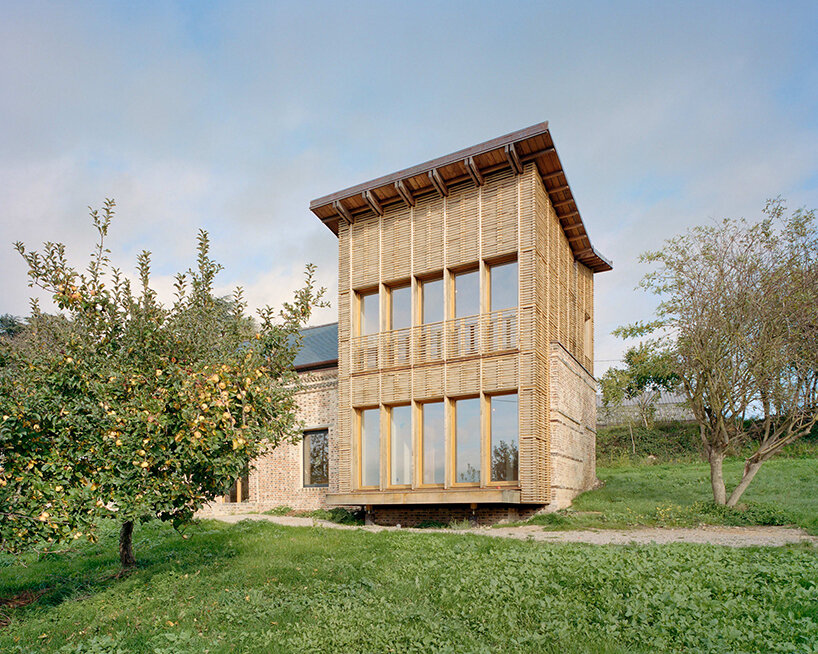
image © Laurent Kronental
reconnecting the house to its territory
Essentially, Anatomies D’Architecture was driven by the idea of ‘recontextualizing’ the way we build our homes. Instead of erecting a ‘standalone’ structure, the goal was to ‘reconnect [the] habitat to its territory, taking into account its particularities and resources: climate, geography, history, built heritage, local materials, regional building techniques,’ writes the cooperative.
The first step to building ‘Le Costil’ was collecting materials on-site within approximately a 100 km radius: Robinia logs (30km) for the wood pile foundations, raw Douglas (30km) for the building’s wooden frame, short circuit hemp (45km) for biobased insulation, recycled corks for rot-proof insulation, local raw earth (0km) for filling and coatings, chestnut ‘ganivelles’ (120km) for bioclimatic cladding. Additional resources include hay, flint, cow dung, and a hazel tree found on-site.
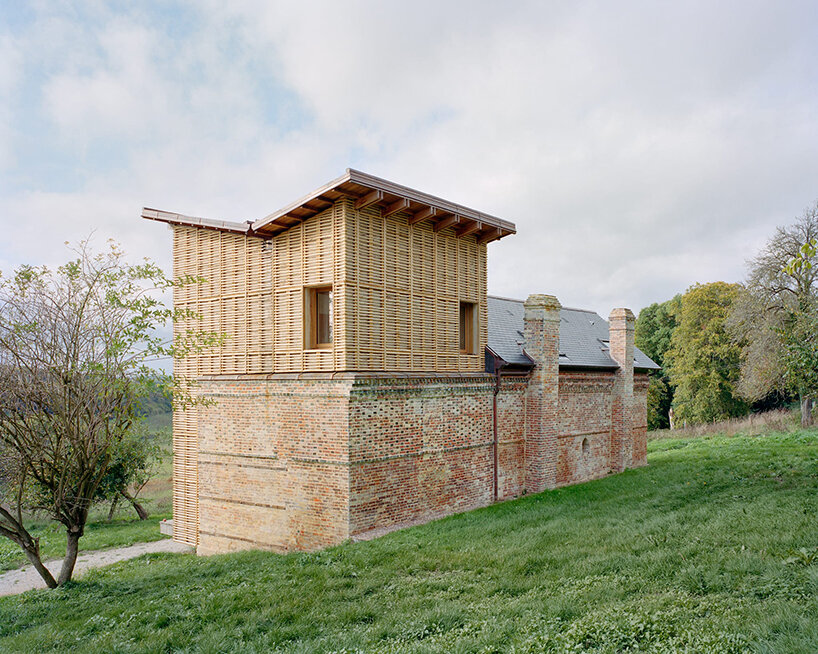
image © Laurent Kronental
In addition to compiling nearby materials, Anatomies D’Architecture reused some of the building’s original terracotta bricks to build a terrace using the traditional Calade technique without mortar and glue to avoid waterproofing the floors. After endless days of team effort, the team managed to carry, scrape and wedge 1,100 bricks, 800 floor tiles, and 400 reused tiles. ‘For the past two years, Anatomies d’Architecture carried out the construction while constantly trying to find alternative and local solutions to conventional buildings,’ concludes the cooperative.
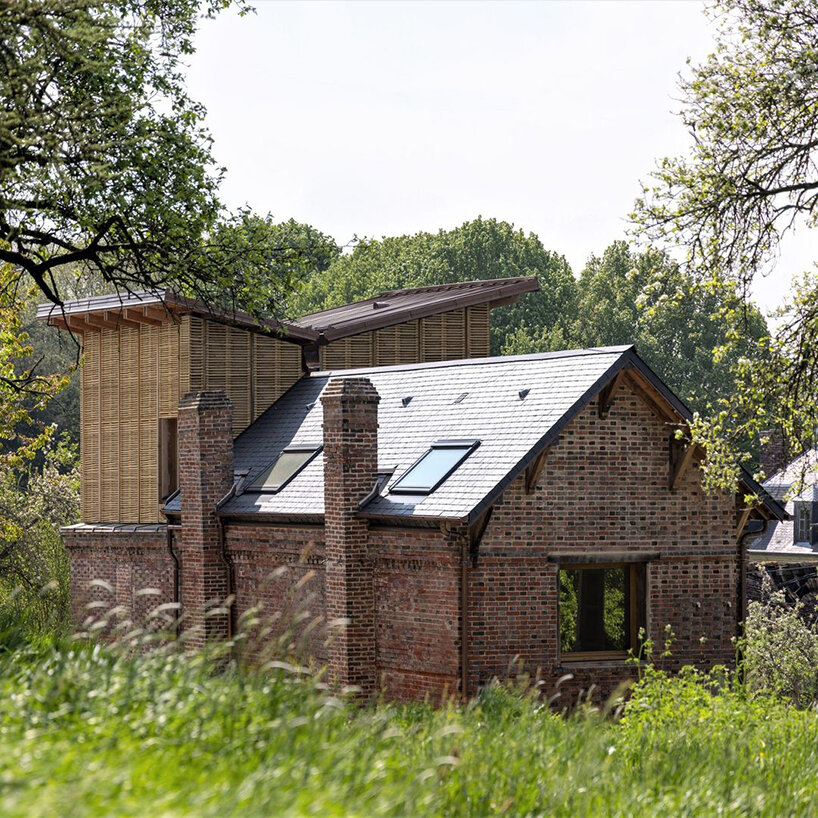
image via Anatomies D’Architecture
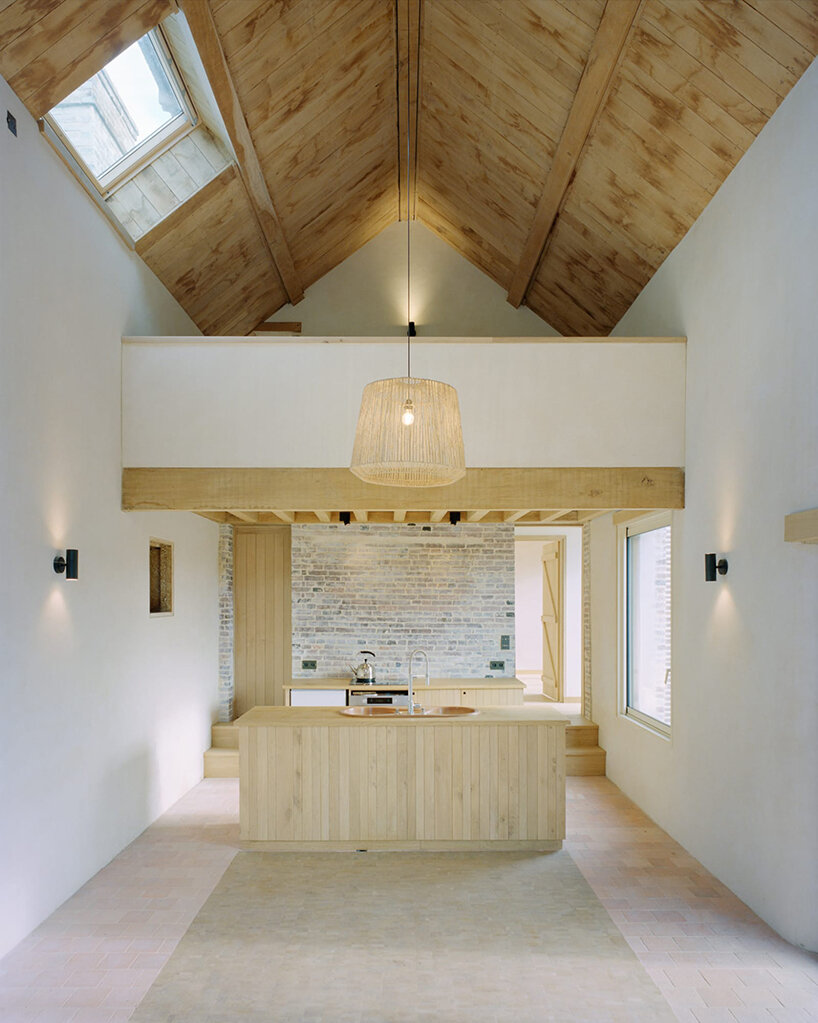
image © Laurent Kronental
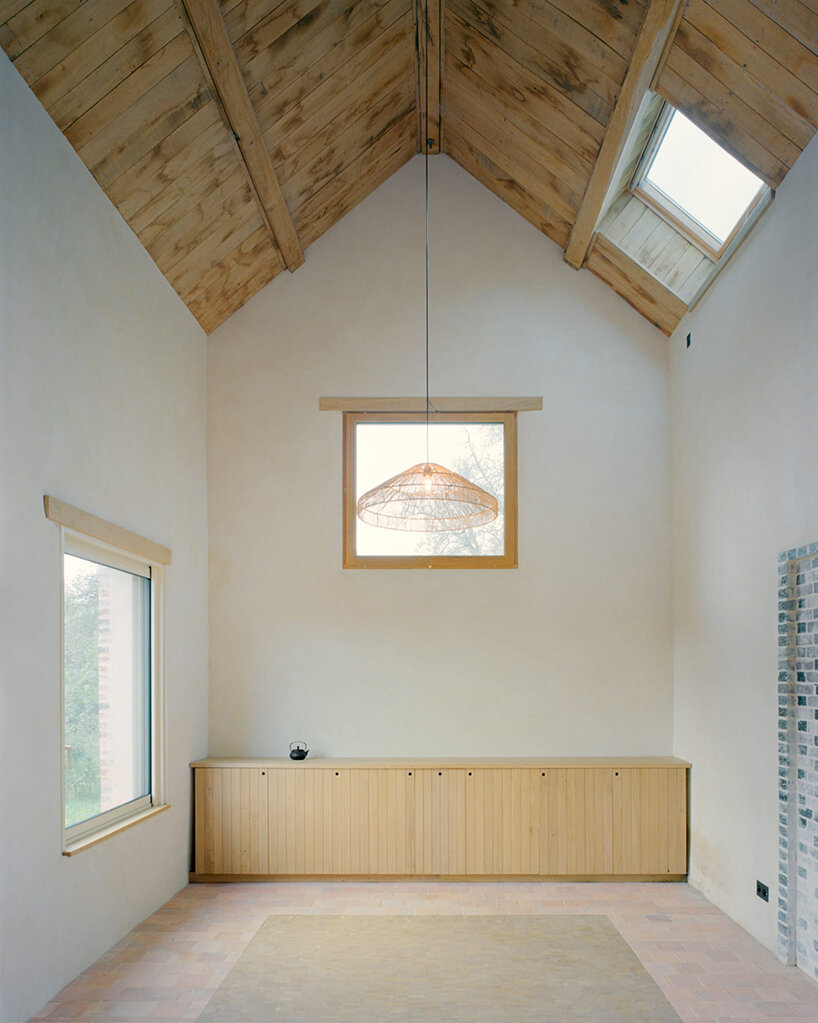
image © Laurent Kronental
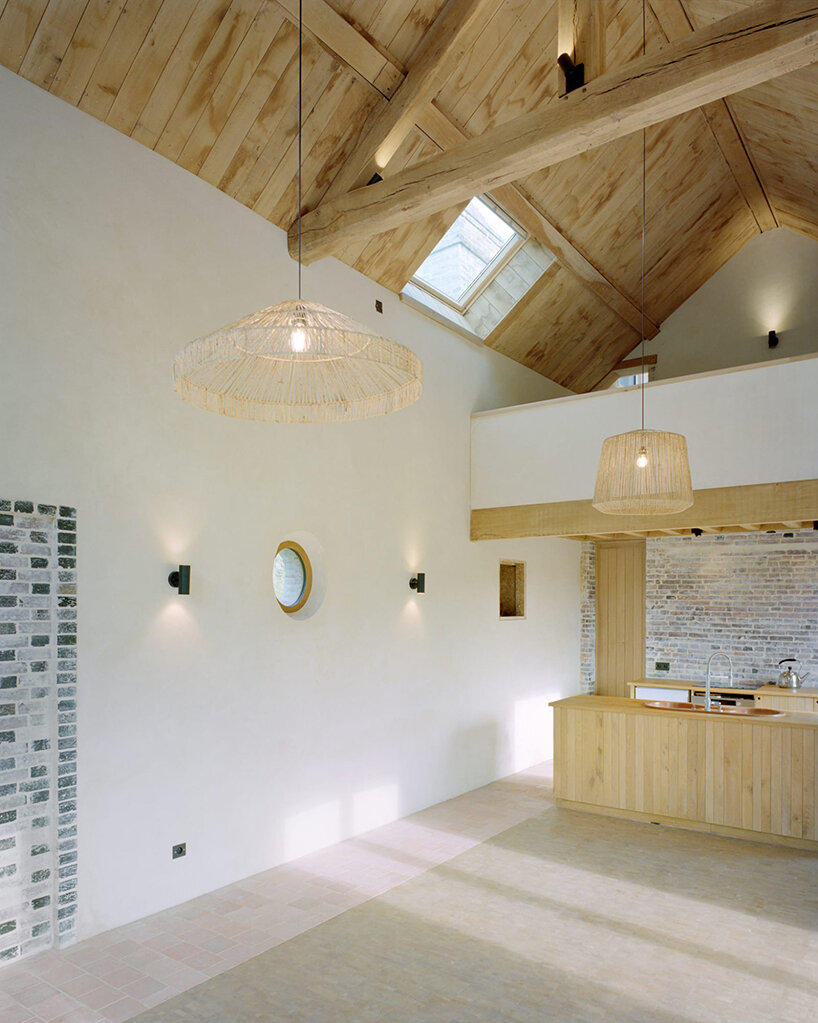
image © Laurent Kronental
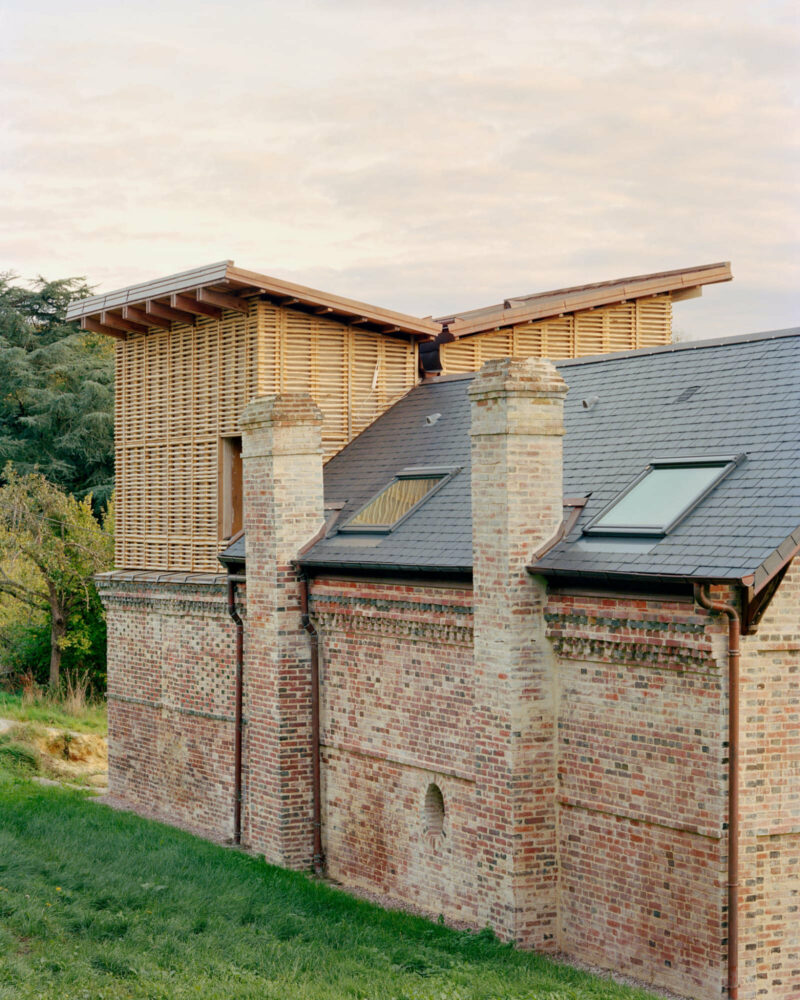
image © Laurent Kronental
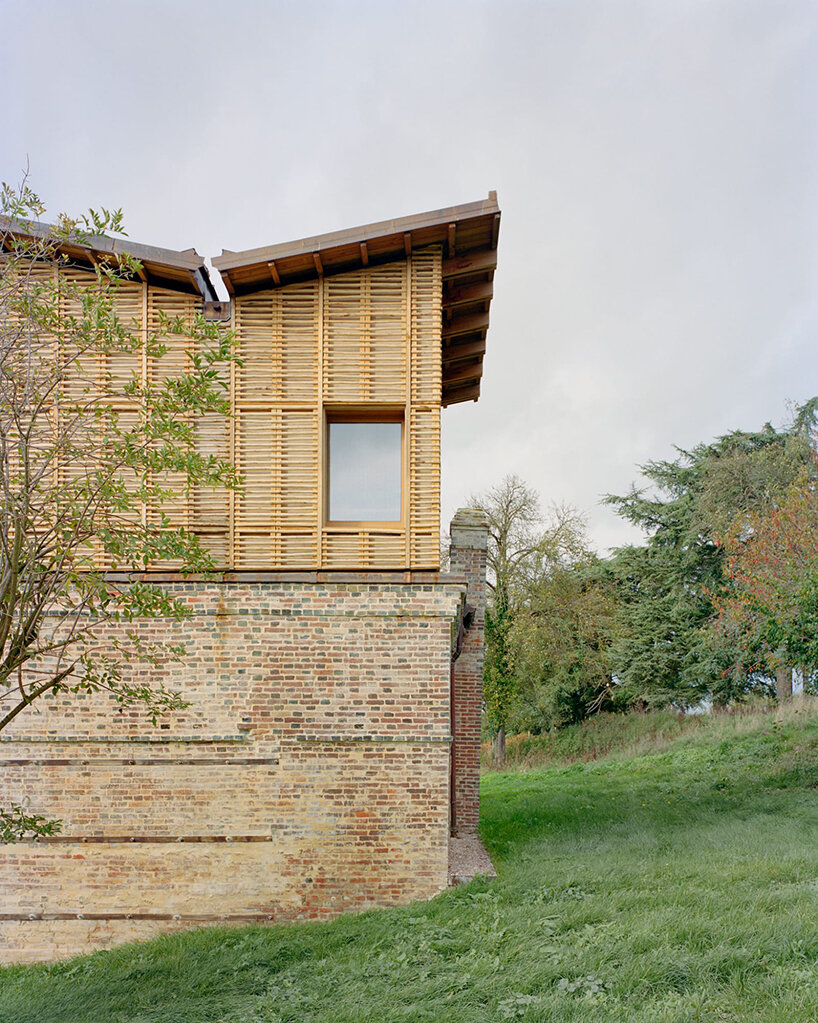
image © Laurent Kronental


